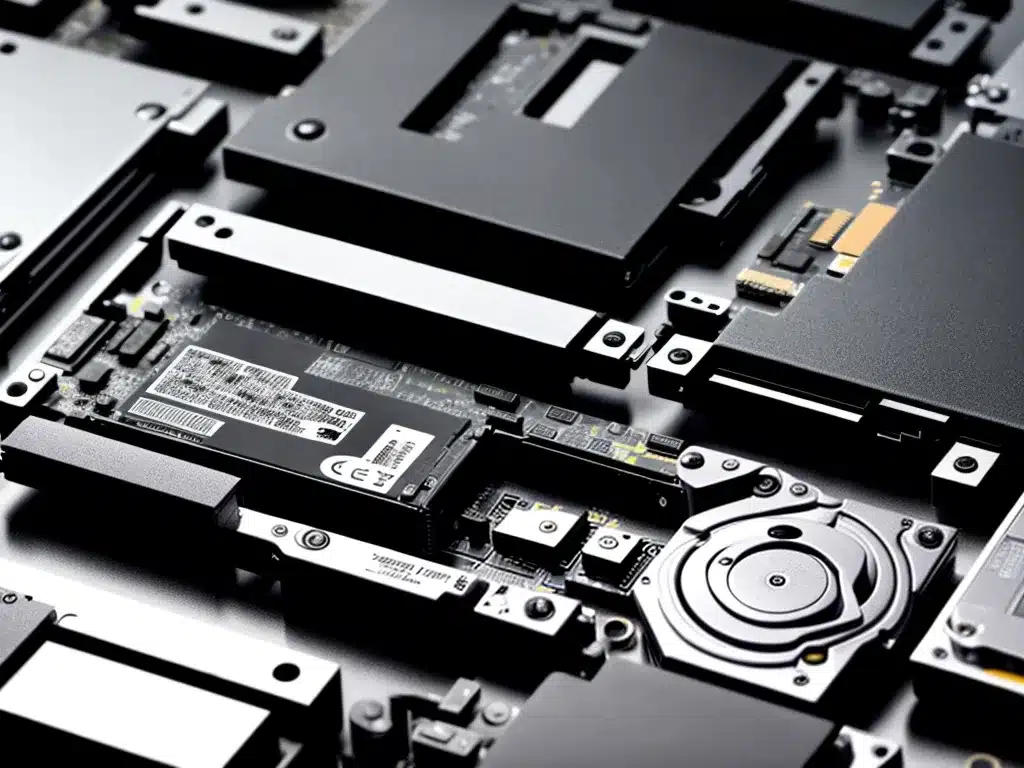
Introduction
Selecting the right solid state drive (SSD) for your desktop PC can be a daunting task given the variety of options available today. However, with some basic knowledge about SSD specs and features, you can narrow down your choices to find the best SSD for your needs and budget. In this article, I will provide a comprehensive guide to choosing the right SSD for your desktop PC.
SSD Types
There are two main types of SSDs – SATA SSDs and M.2 SSDs:
SATA SSDs
- Uses the SATA interface to connect to your PC just like a hard disk drive (HDD)
- Typically comes in a 2.5-inch form factor
- Offers maximum compatibility with desktops that have SATA ports
- SATA SSDs have become very affordable in recent years
M.2 SSDs
- Uses the M.2 slot/interface which is faster than SATA
- Comes in a compact M.2 card form factor
- Ideal for compact PCs and laptops due to small size
- Faster performance compared to SATA SSDs
- More expensive than SATA SSDs
Key Specs and Features
Here are some key specifications and features to consider when choosing an SSD:
Storage Capacity
- Crucial for determining how much data you can store
- 250GB to 1TB are common capacities for most users
- Go higher if you deal with large files like videos, photos, etc.
Sequential Read/Write Speeds
- Determines how fast data can be accessed from the SSD
- Higher is better – a minimum of 500MB/s read/write speed is good
- M.2 NVMe SSDs offer blazing fast speeds of upto 3500MB/s
Endurance Rating
- Indicates how much data can be written to the SSD before it wears out
- Expressed as TBW (terabytes written)
- Higher TBW rating indicates better endurance
- Aim for 300TBW or more for long-term reliability
Controller and NAND type
- The controller manages all data operations on the SSD
- Look for SSDs with quality controllers like Phison, Samsung, SandForce
- 3D TLC NAND offers a good balance of affordability, speed and endurance
DRAM cache
- Small amount of fast DRAM that acts as a data buffer
- SSDs with DRAM cache have faster read/write speeds
- Worth paying extra for, especially in higher capacities
Warranty Coverage
- Gives an idea of the manufacturer’s confidence in reliability
- 5 years is considered standard; some offer 10 years or more
Choosing the Right Form Factor
Here are some tips on selecting the right physical form factor:
- For most desktop PCs, a 2.5-inch SATA SSD is the easiest option
- M.2 SSDs are great for compact PCs and maximizing speed
- For older PCs, use a 2.5″ SATA SSD with a cheap adapter bracket
- Ensure your PC has the appropriate mounting points and connectors
Budget Considerations
SSD pricing has come down significantly but still varies based on:
- Capacity – Higher capacity SSDs are pricier
- Form factor – M.2 drives are generally costlier than SATA
- Performance – You pay more for faster SSDs
Here are some budget recommendations:
- 250GB SATA SSD – Under $50, ideal boot drive for basic tasks
- 500GB SATA SSD – $50 – $70, best balance of price and capacity
- 1TB NVMe M.2 SSD – $100 – $150, blazing fast drive for professional use
Bottom Line
- Know your usage requirements – capacity and speed needs
- Pick SATA or M.2 form factor based on your PC
- Look for a reputable brand and a quality controller
- Check specs like reads/writes, endurance rating and cache
- Choose the highest capacity you can afford
- Verify warranty period before purchase
With the above considerations, you should be able to select an SSD that will boost your desktop PC performance within your budget. Let me know if you have any other specific questions!












